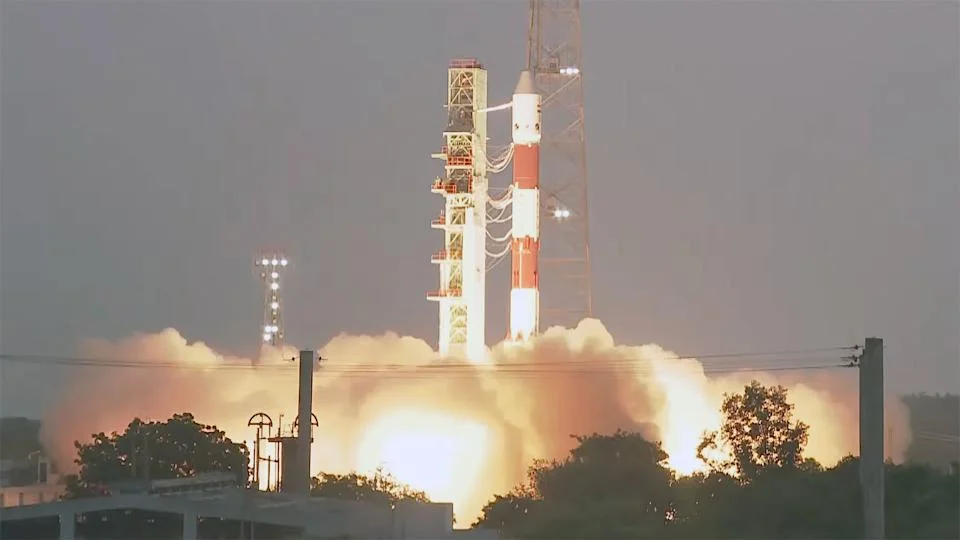
ISRO Faces Setback: Strategic EOS-09 Satellite Lost in PSLV-C61 Rocket Failure
India's space program suffered a significant setback on May 18th, 2025, with the mid-flight failure of the PSLV-C61 rocket, resulting in the loss of the strategic EOS-09 satellite. This incident marks another challenging moment for the Indian Space Research Organisation (ISRO), raising concerns about the reliability of its strategic missions. The failure occurred approximately six minutes after liftoff, impacting a mission crucial for India's national security.

Recent Troubles with Strategic Missions
This recent failure is not an isolated event. Over the past eight years, ISRO has faced multiple setbacks in its strategic space missions. According to reports, there have been four failures affecting satellites critical for India's national security and strategic needs. These failures, each attributed to different component or system malfunctions, highlight the demanding nature of rocketry. Rocketry is a zero-error business, where even the slightest imperfection can lead to catastrophic failure.
Cost and Strategic Impact
The financial implications of these failures are substantial. Estimates suggest that the four mission failures have cost the Indian government approximately Rs.1250 crores (around $146 million). Besides the direct costs, India faces the challenge of reinvesting in redoing these missions and the lost opportunity of deploying crucial space-based capabilities. Without these homegrown strategic satellites, India is compelled to rely on foreign firms for satellite-based services, potentially slowing down planned rocket launch missions and overall space launch timelines.
Past Missions and Challenges
The recent PSLV-C61 failure echoes previous setbacks. In August 2017, the PSLV-C39 mission, carrying the IRNSS-1H satellite for the NAVIC (Navigation with Indian Constellation) system, failed due to a heat shield separation issue. NAVIC, designed to be an Indian equivalent of GPS, is crucial for governmental and military applications within India and its surrounding region. While a replacement satellite (IRNSS-1I) was successfully launched in April 2018, the initial failure underscored the vulnerabilities in critical space infrastructure.
Another significant loss occurred with the GSLV-F10 rocket carrying the GISAT-1 (EOS-3) earth-imaging satellite. Launched to provide almost real-time imaging for disaster monitoring, agriculture, and more, the mission failed due to a malfunction in the cryogenic upper stage. As of May 2025, a replacement has yet to be launched. Delays and failures like these impede India's ability to maintain consistent space-based vigilance.
The launch of the NVS-02 satellite in January 2025, intended for the NAVIC constellation, also encountered issues. Although the GSLV rocket successfully placed the satellite in its initial orbit, an anomaly prevented it from reaching its final orbit. Despite ongoing efforts to salvage the mission, the satellite's long-term viability remains uncertain.
The EOS-09 Mission Failure
The EOS-09 satellite, a radar imaging satellite capable of day and night imaging under all weather conditions, was meant to have an operational life of five years. Its loss is a blow to India's intelligence capabilities, especially concerning security along its borders. The failure of the third stage of the PSLV-C61 rocket is currently under investigation, with ISRO focusing on a pressure drop observed within the motor case.
What Does This Mean for ISRO?
The recurring failures raise questions about quality control and system redundancy in ISRO's missions. While each failure offers valuable lessons, the cumulative impact is delaying the deployment of vital space-based assets. It will likely take over a year or two for ISRO to rebuild and launch a replacement for the EOS-09 satellite. The question remains: what steps will ISRO take to fortify its processes and ensure greater reliability for future strategic space missions?
What are your thoughts on the recent setbacks in ISRO's space program? Share your opinions and insights in the comments below.
Related issues news
What is the EOS 09 mission?
This satellite was meant to take pictures of the Earth for border security and disaster management, even in bad weather. But the mission failed during the third stage of the rocket's journey, leaving everyone wondering what happened.
What is the EOS 09 satellite?
EOS-09 or Earth Observation Satellite-09 (formerly known as RISAT-1B) was an Indian Space Research Organisation Radar Imaging Satellite designed to provide continuous and reliable remote sensing data for operational applications across various sectors.